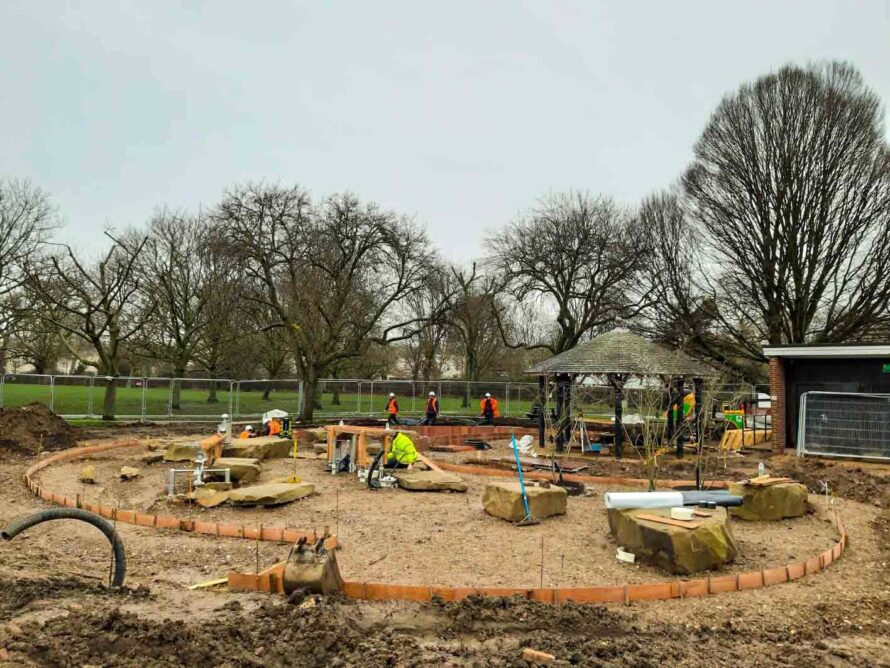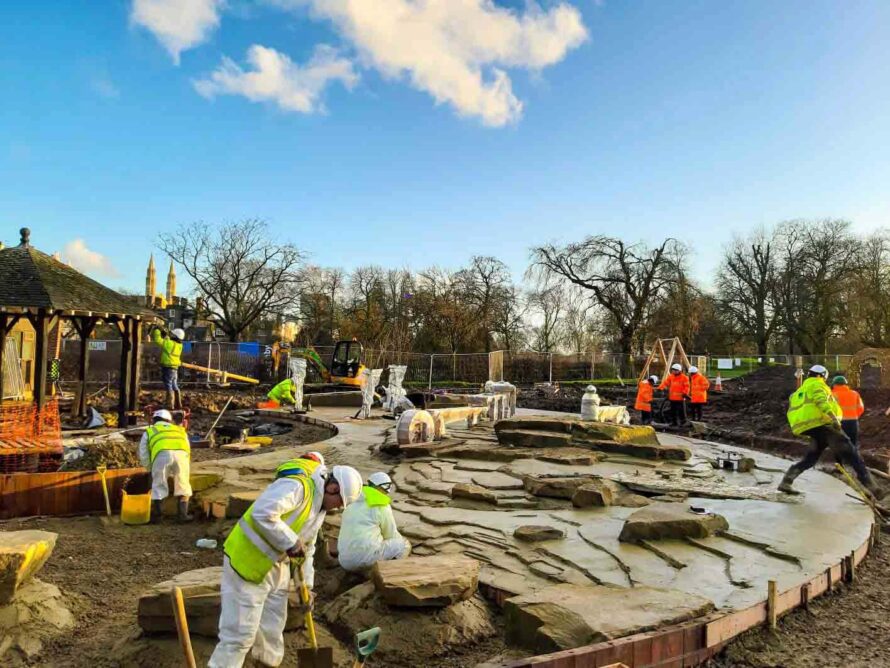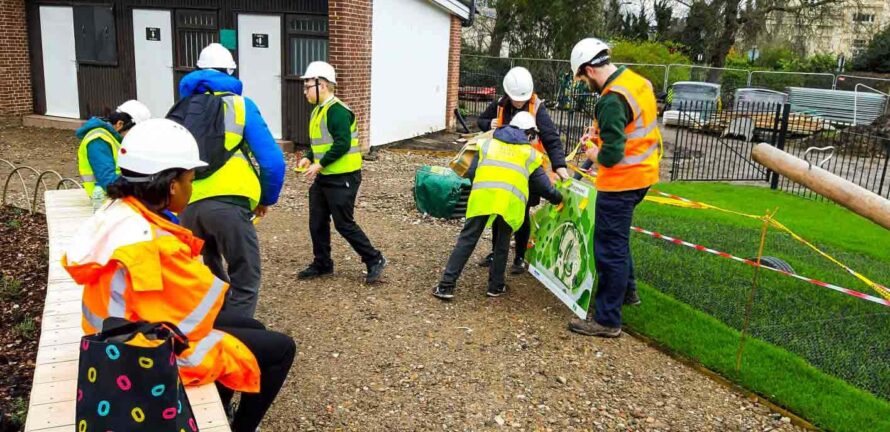Suggestions
Grounds Maintenance, Landscape Creation, Arboriculture, Sports Surfacing, Parks management, IOS Managing Safely Training, Ecology & Biodiversity, Grass cutting, Horticulture, Street Cleaning, Soft Landscaping, Hard Landscaping
Our Services
idverde provides a wide range of green services, including grounds maintenance, landscape creation, and advice services, to both private and public sectors across the UK.
Gloucester Gate Playground, The Regent’s Park
The design for the new play area features several zoned play areas constructed on a large accessible mound. Each zone reflects old English names for woodland areas. The scheme aims to provide opportunities for creative and imaginative play in a social environment through the basic physical activities of climbing, swinging and sliding.
BALI NATIONAL LANDSCAPE AWARDS WINNER 2021 Category 1K | Community & Schools Development
More projects for The Royal ParksThe Project
There has been a play area at Gloucester Gate in The Regent’s Park since the 1930s. Over the years there have been many modifications and upgrades. However, in 2016 The Royal Parks made the decision to decommission and demolish the tired and relatively uninspiring (by modern-day design standards) play area, replacing it with a larger, multilevel scheme, attractive to all ages.
The design for the new play area features several zoned play areas constructed on a large accessible mound. Each zone reflects old English names for woodland areas. The scheme aims to provide opportunities for creative and imaginative play in a social environment through the basic physical activities of climbing, swinging and sliding. Other features include a sand and water play area, a wheelchair-accessible bridge across two mounds called ‘the Revetment’, and a 50m long zip-wire.
The new scheme is set within a sensory environment of ornamental shrub, woven willow and tree planting in order to integrate it within the landscape of the surrounding park and soften its’ impact.
Our Role
idverde was awarded the contract for the high profile Gloucester Gate Playground project in May 2019. The project commencement was initially delayed owing to the discharging of pre-commencement conditions and the conclusion of the drainage scheme and discharge consents, however, ground was broken at the end of July 2019.
Once the site had been cleared, the whole area was remodelled and graded to form a multi-level design. All material, where practically possible, was retained on-site to prevent muck-away and traffic on the roads. This was used to form the contoured nature of the project, recreating the Blitz theme.

Drainage is managed on-site and contained within a large attenuation cell located below the mound to meet the discharge requirements of Thames Water. A gabion basket wall was then constructed with all of the baskets being bespoke, made on-site to the curvilinear shape. This formed the abutments to the bridge, creating the embankments and cutting.
To enable the construction of the bridge, concrete abutments had to be preformed with stainless steel rods linking through the gabion baskets before the structure arrived at the site, with measurements having to be exact. A crane was then deployed to position the 6-metre long prefabricated curved steel bridge. As this was taking place within a live park, pedestrian and traffic management, lifting plans, and specialist subcontracts had to be carefully managed.
The construction of the water play area involved the placement of feature boulders in collaboration with artist Mel Chantry and the pouring and shaping of pigmented textured concrete. When forming the concrete, a high degree of engineering expertise was required to ensure the exacting levels enabled the water to flow to the drainage outfall. This was all achieved under the watchful eye of the project Artist and a 3D model. Specialist lifting equipment was then used to place the 4-ton boulders.


A project such as this will always create much public interest. Working alongside the Royal Parks, we initiated a number of events that would promote public engagement with the project. These have included, hard-hat tours for both adults and children from various local organisations, as well as practical planting and mulching sessions. We provided all of the necessary child-sized PPE and hand tools.
The playground also features a number of bespoke woven living willow structures by artist Jim Buchanan who also guided the installation and placement of the Robinia poles and nets to the bridge.
Challenges
The site had a number of constraints to the delivery including the presence of historic trees with significant root protection areas and the largest population of hedgehogs in London. We had to work closely with The Royal Parks to ensure the sensitive management of these constraints, including the design of the compound area to be hedgehog friendly, and implementing measures at access points to prevent hedgehogs from moving out into the road.
The project had a delayed start owing to pre-commencement conditions and consents still outstanding at the point of contract award. This pushed key activities into the unfavourable months of November and December, conflicting with the largest event at The Regent’s Park – the Frieze Arts Festival. Works had to be carefully planned to ensure minimal impacts to the event.
The winter of 2019 was one of the wettest on record. This posed a major problem with the delivery of materials. resulting in us having to construct temporary access roads that could support the weight of machinery and vehicles being used. We also had to design and create temporary swales to enable drainage of floodwater, and have submersible pumps running whilst the site was active to prevent further flooding. At one point the site was inundated with 500mm of water across its extent just one week before the concrete pour.
Although the playground was closed to the public throughout the duration of the project, the adjacent park remained open. This created issues around ensuring public safety, especially where vehicle movements were taking place. Furthermore, there was a constant need to keep the surrounding pathways clean and free of litter and debris.
In addition to the usual challenges that come with a complex project such as this, the final stages of the construction and landscaping had to be concluded whilst stringent restrictions were in place for COVID-19. This resulted in us needing to re-master our risk assessments, put additional levels of hazard control in place and ensure compliance with all government guidelines, all while still adhering to the programme schedule.
With the varying factors which influenced the programmed completion date, the team have overcome unprecedented events to deliver a high-quality outcome and playground to rival the very best in the UK. It is a result of the hard work and dedication of the site team that the scheme was delivered in spite of the many challenges, and without compromising on quality.
